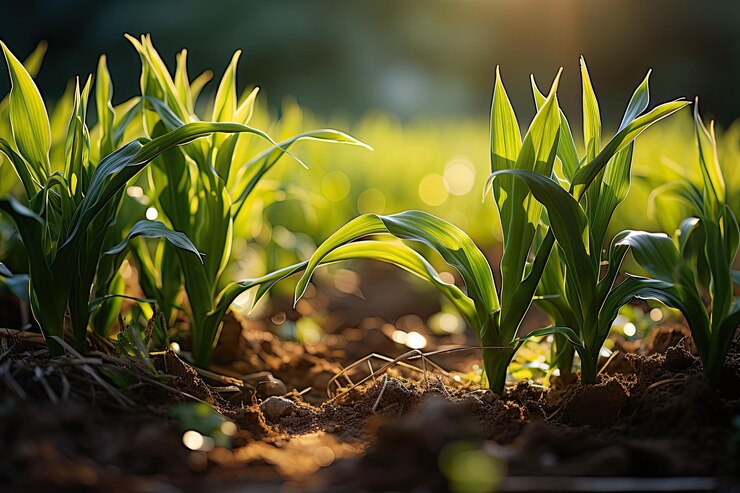The oldest and most important industry in the world, agriculture has still been able to evolve over the years with the help of the latest technology and innovative practices. From sustainable farming innovations to crop science breakthroughs, recent developments are altering how food is grown and produced today. Here’s an update on some of the key recent updates in the area of agriculture.
Vertical Farming Gathers Momentum
Vertical farming is changing the face of agriculture with farmed produce grown in stacked layers, mainly within indoor controlled environments. The method eats up less water and land while producing more crops compared to the conventional methods of farming since it is able to harvest all year round. Cities such as New York and Singapore have recently felt a real growth spurt in vertical farming initiatives. Companies like AeroFarms and Bowery Farming are really leading in this space, utilizing intricate hydroponic systems connected with AI-driven analytics to monitor and ensure perfect growing conditions, producing high yields.
CRISPR-Edited Crops: A New Frontier for Precision Agriculture
Famous for its preciseness in gene editing, CRISPR is revolutionizing agriculture. Scientists are using this new biotech tool to develop crops more resistant to diseases, pests, and environmental ravages. Recently, scientists have succeeded in doing something entirely new: using the innovative CRISPR technology to increase the drought tolerance of wheat—one of the staple crops that play a central role in ensuring food security globally. This breakthrough is expected to benefit farmers in arid regions and probably greatly enhance food production amid changing climatic conditions.
Robotics and Automation: The Face of Farming
Robotics and automation are increasingly becoming a big part of activities by the modern farmer. Autonomous tractors, drones, and harvesters make operations easier and faster. John Deere just announced the launch of its fully autonomous tractor, which can be remotely controlled by means of a smartphone app. This kind of technological advancement not only eases the workload on the farmer but also brings precision in terms of planting, fertilization, and harvesting crops.
Regenerative Agriculture for a Sustainable Future
Regenerative agriculture is a rapidly expanding holistic farming philosophy that encompasses soil health, biodiversity, and ecosystem restoration. This approach aims to require actions such as crop rotation, cover cropping, and reduced tillage to enhance the flow of organic matter into soils and promote carbon sequestration. Giants like General Mills and Nestle have pledged to source from farms using regenerative agriculture. Recent research identifies that these practices have the added twin benefits of improving soil health while farm resilience to extreme weather events is increased.
Climate Smart Agriculture: Adapting to Change
Climate change is the most serious hazard to agricultural practices, and hence climate-smart practices have been avowedly called for. Innovations include climate-resilient crop varieties, precision irrigation, and agroforestry, among others. FAO recently launched a global effort to promote climate-smart agriculture in developing countries, aimed at helping farmers master weather variability and reduce the emissions of greenhouse gases. This will be central to food security in a warming world.
Blockchain for Food Traceability
Blockchain is leaving its mark on agriculture in the area of transparency and traceability in the food supply chain. In a nutshell, blockchain will ensure safe transactions and recording, ensuring that every product that reaches consumers’ tables can be traced back to where it all started: at the farm. For instance, large-scale retailers and producers are already using IBM’s Food Trust platform to track down the origin and journey of food products. Greater transparency from this aspect helps to be more assured about food safety, fraud reduction, and in establishing trust among consumers.
Organic Farming: A Growing Demand Area
Demands for organic foods are still at an all-time high, driven by consumers’ real appetite for a healthier and cleaner option. Driven also by this trend, corresponding growing organic farming practices could be noted across the globe. Recent reports indicated a continuous need for growth in the organic food market over the next decade. The Farmers practice in methods that rule out the use of synthetic chemicals. They promote biodiversity and are attentive to sustainable management for the soil. This will help not only to address the demands of the market; it will also be a contribution towards saving the environment.
Conclusion
The agricultural sector is undergoing a radical transformation through technological innovation and increasingly strong sustainability orientation. Vertical farming, CRISPR-edited crops, robotics, regenerative practices, and blockchain technology have developments that can take farming into the new age. The agriculture industry continues to embark on changes; support and investments must hence be provided for these innovations for the next generation to come. Keeping pace with these developments gives insight into how agriculture could meet challenges here and now, and also in the future.

